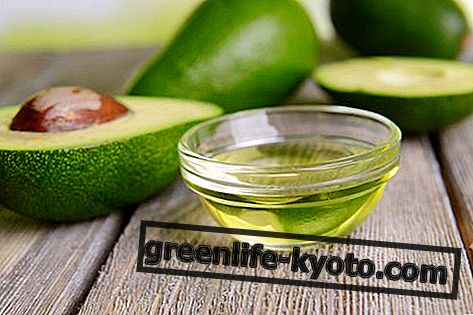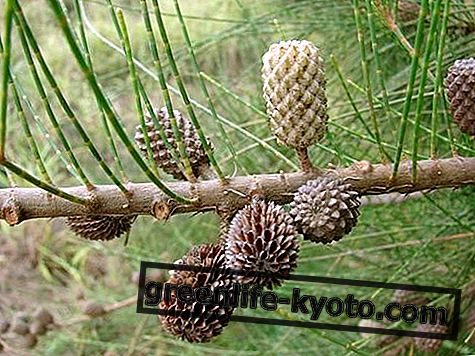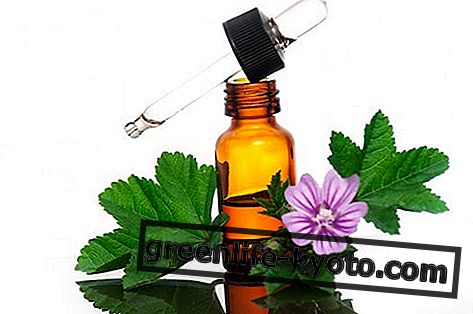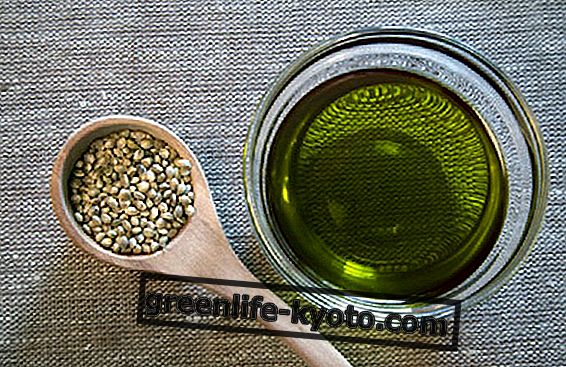Avocado oil is extracted from the pulp of the fruit of the avocado plant referred to in botanical parlance as Persea americana or Persea gratissima . From the high content of monounsaturated fats, it is a highly revitalizing and energetic oil . Let's find out better.

Characteristics of avocado oil
The avocado is from 2000 different species of plants of the laurel family. The avocado is cultivated in tropical countries and currently its fruits arrive also on the western tables where it is appreciated for its taste and for its endless culinary and cosmetic uses.
There are at least 400 different types of avocado plants depending on the variety of cultivation and all are different in size, skin color and fruit shape.
The best known are Ettinger, Nabal, Fuerte and Hass ; the latter is considered the best in terms of flavor. In Italy usually two varieties are imported, the more elongated ones, Ettinger and Fuerte, with a thinner skin and a beautiful bright green.
To obtain avocado oil, the extraction process is usually carried out with chemical solvents and subsequent refining is needed to lose the pronounced odor typical of the fruit, making it finally a yellow and almost odorless product. Cold pressing instead produces a crude oil, emerald in color (given by chlorophyll and carotenoids), pasty and very rich. It is said that the taste of the unrefined product is somewhat reminiscent of that of mushrooms.
It has a natural low acidity which makes it pleasant for feeding, even if the storage times are shortened given the risk of rancidity even if it is compensated by the antioxidant that it naturally contains. Avocado oil is then stored as many vegetable oils in dark containers, away from heat and air.
It has a particularly high smoke point, especially when refined, which can vary between 250 and 270 ° centigrade which makes it ideal for frying.
Properties and use of avocado oil
Avocado oil is an oil used predominantly in cosmetics even though it is used for food as a condiment when raw, which in some countries of the world is commonly consumed for cooking . It is also used as a lubricant.
It has a high content of monounsaturated fats, about 70% of oleic acid, linoleic acid and palmitoleic acid and about 10% of saturated fats that make it consider a highly revitalizing and energetic oil to be used in the right proportions, excellent for those who need integrate fats such as in vegan diets and for sportsmen and growing children, while use in the case of obesity and a tendency to gain weight should be controlled.
Avocado contains various minerals such as sulfur, zinc, magnesium, calcium and various vitamins, in particular C, E and many of the B group, especially pantothenic acid. The presence of vitamin E facilitates the absorption of carotenoids, precursors of vitamin A.
In the avocado phytocomplex we still find phytosterols such as beta-sitosterol, campesterol, citrostadienol and terpenic alcohols, avocatine and volatile acids that all together synergistically combine to create all the properties of this fruit. Furthermore, together with the richness of vitamin E we find a good source of potassium which makes avocado oil an excellent source of antioxidants.
In the health field, the consumption of avocado oil taken orally protects the body's cardiovascular system thanks to oleic acid and is also able to reduce bad cholesterol while increasing the good one, thus favoring a reduction in the risk of cardiovascular diseases.
Its composition in omega 3 and 6 combined with the presence of vitamin E make it an excellent antioxidant that reduces free radicals and also promotes the strengthening and restoration of blood vessels by rebalancing the cardiovascular system.
In some studies it has been shown that alpha linolenic acid contained in avocado helps prevent cancer, especially breast and colon cancer, while vitamin E prevents and treats skin and prostate cancer.
At the stove it is used almost exclusively for frying (given the high smoke point), although there are other opportunities to use avocado oil in the kitchen. In the case in which it is raw, it can be used raw as a condiment, thus bringing a particular flavor to dishes.
Together with the pulp of the same avocado it can be added to soften the guacamole or even to give a particular tone to certain sweet drinks, as happens in Africa or in Southeast Asia where particular species of milkshakes foresee it among the ingredients, together with milk, to chocolate and other fruit.
In cosmetics avocado oil is mainly used for its excellent moisturizing, nourishing and regenerative properties that support its use as an ingredient for beauty masks and creams for the skin of the face and the whole body.
Another advantage is its ability to penetrate the skin and allow rapid absorption, which makes it an excellent oil also as a vehicle for other beneficial substances to the body, especially with regard to the epidermis.
The consumption of avocado oil in the diet or as a supplement can improve skin conditions thanks to its sources of vitamin A, D and E which are involved in the growth and regeneration of skin cells. Furthermore, the presence of vitamins E and A also favors the healing of possible wounds and small abrasions, also reducing the formation of scars.
Properties, calories and nutritional values of avocado

Curiosity about avocado oil
The name derives from the inspiration of the ancient name nahuatl āhuacatl . In some South American nations it is called " alligator pear " due to the roughness of the skin, while in China and India it is sometimes called " butter pear ". Ahuacamolli, which means " avocado sauce ", is the ancient Nahuatl term from which today's " guacamole " is derived.
A beauty recipe
Take a 1k of ripe fresh avocado pulp which is obtained by cutting the avocado into pieces and removing the large central seed, then removing the peel which is easily separated with a knife from the pulp. In a blender add the pulp and 500 ml of vegetable milk (coconut, rice or soy) where everything will be reduced to a homogeneous puree. Then place in a pan with a double bottom on medium heat and stir gradually to prevent the mixture from sticking or burning.
Once the liquid part has evaporated, we can filter the remaining mixture with a cotton cloth and squeeze it well, draining the oil into a previously cleaned container. The container should be dark glass and kept labeled away from heat, air and humidity. If desired we can also keep it in the refrigerator where, however, it will take on a denser consistency.
At the moment when the oil will be needed, we will have to take it out to room temperature a few hours before its use and we can then use it as an ingredient for the preparation of homemade ecocosmesis products or for recipes in the kitchen.













